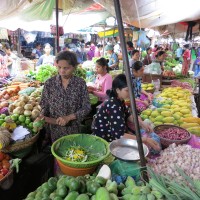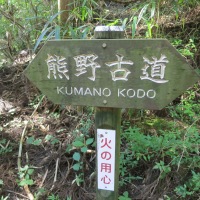The foods encountered within Tanzania can range from the starch heavy stomach bombs of ugali and rice within the cities and towns all the way to the milk and blood mixture that serves as the primary means of sustenance for tribes like the Maasai, from freshly caught seafood along Lake Victoria to the coconut and curry heavy fare found near the ports on the coasts. But any way it comes — and much like anywhere else in the world — one can’t truly come to know a place without diving into the local culinary creations. Although I was frequently confined to the Western fare that was produced for our traveling convoy on this trip, I still sought out every opportunity to sample what I could where I could (and my opportunities likely increased due to my incessant nagging of the guides in that respect).
In contrast to countries like France, Spain, or Japan, however — where the local cuisine has been honed to perfection over thousands of years and elevated to more of an art form — the food of Tanzania takes on a much more utilitarian angle: that of providing energy to the diner in the most efficient manner. As evidence of this, the staple food of Tanzania, which is consumed at virtually every meal, is that of Ugali, a doughy mass made from either maize or cassava flour. The consistency shouldn’t be too sticky, should be malleable enough to form ball of dough into a small scoop, but shouldn’t be watery or loose enough that it falls apart with in contact with liquid.

Ugali, in its cooked form, isn’t the most visually exciting food to look at — and, unfortunately, the taste errs on the side of bland, too. It isn’t Ugali’s fault, however, that it is the culinary equivalent of cardboard. Afterall, its primary purpose is simply to stuff one’s body with as many carbs as possible, all in an inexpensive manner and with the few materials readily available

The monotony of bite after bite of ugali is, happily, broken up with the inclusion of various sauces with which it is normally served, made from meat, fish, or vegetables. The procedure is to grab a hunk of ugali, roll it into a ball, and then, using your thumb, to push an indentation into one side. This creates a handy scoop for savouring the delicious sauces

My favorite dipping sauce (or topping for anything on my plate, for that matter) was the spicy chili paste known as Pili Pili

Luckily for our taste buds, the Tanzanians often cook up the rice with a few hunks of chopped meat and a handful of seasoning for another common dish called Pilau

I was able to sneak away during one of our meals in a village in Karatu and was welcomed into the kitchen to watch the cooks in action (shown above). Needless to say, the modern conveniences of food processors and stand mixers haven’t yet become common place here

After rolling out a flour and water dough by hand into a shape akin to a thick tortilla, the common flat bread called “chepati” is then tossed into a skillet to cook over an open fire

When finished, the chepati comes out closer to an Indian naan bread than anything else I’ve had before
Beyond the starchy goodness listed above, however, the remainder of the cuisine of Tanzania usually consists of basic roasted or grilled cow or goat meat (mishikaki or nyama choma) or simply preparations of fruit and vegetables:

Sweet, crepe-like pancakes often complemented the local coffee or spicy Zanzibar teas over breakfast
If you’ve been following along in my adventure for any length of time, you’ll long since have realized that I’m occasionally partial to the liquid side of life. And as such, a trip to a new country wouldn’t be complete without at least sampling the indigenous beverages:

Amarula liquor (made from the amarula fruit) — it had a creamy texture akin to the likes of Bailey’s Irish Cream, but instead of a chocately flavor, it was all tropical fruit that hit the palette. When asked how best to enjoy this, I was told the common method was two shots of Amarula, mixed with a shot of vodka to kick up the alcohol (and you’d get bonus points for using the locally distilled vodka known as Konyagi)

The beers of Tanzania didn’t get too creative with their titles, with common brands being Serengeti, Kilimanjaro, or Tusker

Another unique beverage to the area is that of Mbege — a beer-like (though listed as fruit wine) brew made using bananas as the primary ingredient
Diverging from the topic of food, my time spent in Tanzania was a particularly special one for me, as it was a chance to not only both experience a culture of which I previously knew very little and come closer to the native wildlife than I had even dared to dream of, but it was also an opportunity to spend some quality time with my father and brother who were along for the ride (visiting with family is obviously difficult considering that I’m averaging a new country every few weeks):

That is my father, Ralph, in the middle, and my brother, David, on the right (you remember him from my post on Prague, right?). I’m the dashing young man with the suave (read: shaggy) hair on the left

Given the beating the vehicles take, it isn’t surprising to have to do some ad hoc repairs while out in the bush
An interesting phenomenon often occurs when reflecting back upon a particularly memorable destination or adventure, one that I’ve written about a few times in the past. After you’ve bragged to your friends about your infinite bravery when facing down lions, shown your family the pictures of the children you encountered in the small villages, hung up the photo of you jumping with the Maasai on the refrigerator, and eaten as much ugali as your stomach could contain, what frequently lingers at the forefront of your memory are the small moments, such the way someone smiled at you, how the light and shadows danced through the trees as you watched the sun setting, the sounds of dry weeds and grasses crunching underfoot, or the vibrant explosions of color that seem to explode where you least expect them. Pictured below are a few of these memories that I’ll keep with me from my time in Tanzania (either that, or they are simply a random collection of pictures that I liked but couldn’t fit in anywhere else – take you pick):

Taking off in the middle of the Serengeti Plain in a tiny puddle-jumper can be as entertaining as any game drive

After taking many requests, I’ll go ahead and post the picture of my brother and I jumping with the Maasai — though I’ll vehemently argue that the warrior jumping with us was cheating by bending his knees and raising his feet while in the air, making his jump appear to be all the more intimidating (and thanks for the photo, Kay!)
With my time in Tanzania coming to an end, I’ll soon be moving on to my next destination: that of the hyper-kinetic, futuristic mega-city that is Tokyo (which honestly, could hardly be any further from East Africa — not only in distance, but in culture, as well). After a few days in the neon metropolis, my plan for the next few months is to continue west through the Kansai region of Japan, jump over to South Korea to indulge my kimchi cravings, eat everything I can in Hong Kong, opt for a bit of hiking in Taiwan, and finally end with a few months making my way west through China. I can’t wait. Until then, Cheers from Tanzania!

 July 28, 2012
July 28, 2012 
































Awesome post! Your writing and pictures are just wonderful. Thanks for sharing with everyone.
No prob — I’m glad to have everyone along for the ride!
Amazing!
Thanks!
Once again, thank you for the wonderful introduction to the sights and flavors of your travels. The kitchen photo in particular made me aware of how we are so spoiled with the ease of our food prep areas….counter at a good height for working….cooking on a stove with regulated heat etc. Some of your photos are gorgeous!!!
Seeing the cooks preparing food over open fires was certainly a bit of an eye-opener. The whole spread was still quite delicious, though. Thanks for reading!
I’m customtripplanning and wvfarm2u….multiple personality LOL
Ha ha! I hadn’t realized, Beth, that you were all three — you’ve been following my travels for some time now, so I certain appreciate the support! And if my travels should ever take me into West Virginia — near your neck of the woods — I’ll certainly stop over to say hello 🙂
Some people consider us a foreign country also LOL
What great pictures, oh one of them is mine. Glad you could use it. Can’t wait to see what comes next in your life. Give our best wishes to your Dad and David. Kay
Thanks for the photo, I’ll send along your wishes to David and my Dad, and thanks for following along!
Andrew – Another fantastic story! Liked the pix with your brother & you jumping!!! Out of curiosity, how many times did you have to jump??! ok, you will totally rock Tokyo, Korea, HK & China! Can’t wait to read your posts!!! Quick….hop on the plane……….if you’ve not already!
We jumped (as hard as we could) roughly 12-13 times — or basically until we were out of breath and couldn’t stay in a straight line anymore. And I can’t wait to start this next leg. I fly into Tokyo on Wednesday, and I couldn’t be any more excited!
Be safe! and tell us more stories!!!
Thanks for the food and drink review (as always!) which might be useful for me when I go to Tanzania one day (as your posts on Laos did when I visited the country back in May). Good luck exploring East Asia!
The Ethiopian restaurants here all serve Tusker. I think it’s delicious. I am a rube though.
When asked what his favorite beer was, a wise man once said, “The beer that’s in front of me.”
Натуралистично…истински пътешественик – ПОЗДРАВИ ОТ ДАЛЕЧНА БЪЛГАРИЯ…
Thanks for reading, and I appreciate the compliment — though admittedly, I had to use google translator to figure it out! 😉
We love your blog, Andrew, and we wish you well in your travels. Give our greetings to your Dad and David. We also felt that you guys jumped very well when we saw you do it in the village in Tanzania, Sally and Paul
I’m glad you’ve enjoyed reading it — it’s fun to write, too! I will certainly pass along your regards to both my Dad and brother, and it was great spending time with you and Paul in Tanzania. I hope you guys made it back to Chicago will few hassles, and I hope we get the chance to meet again somewhere down the road!
Paul and I hope we meet you and your family somewhere down the road too. For sure! Going on that trip with you and the others was very special..Also I just heard that the Kigelia tree, aka sausage tree, which we saw in Africa, produces an oil in the sausage shaped fruit which apparently helps to clear up some skin problems. Go figure. Sally and Paul